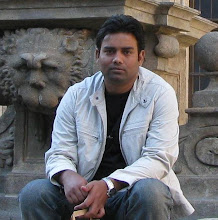Introduction – Lingodbhavamurti story is found in Shiva-purana, Linga-purana, Vayu-purana and Kurma-purana. As per this story, Vishnu was sleeping at the end of kalpa, when Brahma suddenly appears out of a great illumination. Brahma found Vishnu there so he approached to him and introduced himself as the creator of the universe. Vishnu replied that he is also the architect of this universe. Hence started the quarrel between them to find who is greater. Suddenly a lingam appeared in form of a cosmic fire with thousands of the flames blazing out of that. This fire pillar was so huge that Brahma and Vishnu were not able to see the start and end of this. So they decided that whoever will find the start or end of this fire will be accepted as greater than the other. Thus Vishnu took form of a boar and started in downward direction, and Brahma took form of a swan and started flying in upward direction. However both were not able to get success in their efforts for a long time. Brahma found a flower of Ketaki descending downwards and he asked it from where it is coming. It replied that it is descending from the head of this fire pillar, so Brahma took it as a proof that he has got the starting end of this fire pillar. When Brahma and Vishnu met then Brahma lied that he has found the starting end of this fire. But both realized that there is someone greater than them so they started praying to this fire. Pleased with their prayers, Shiva emerged out of this fire lingam and addressed both of them, ”You both are born from me, Brahma having come out from my right loin and Vishnu from the left loin; all three of us are really one, but are now separated into three aspects, namely, Brahma, Vishnu and Maheshvara. Brahma will in future be born of Vishnu and at the beginning of a kalpa, I myself will be born from angry brow of Vishnu”. From then on lingam came to be worshipped by all men. As Brahma lied about the flower, he is cursed that he will not be worshipped on the earth in any separate shrine. Also ketaki flower will not be offered in any worship.
As per Amsumadbhedagama, following description is seen for Lingodbhavamurti: The figure of Shiva should be carved on the front of lingam. The legs below the knees of Shiva should be invisible within the lingam. On the right of lingam should be carved Brahma in shape of a swan. Vishnu should be carved on bottom left in form of a boar. In Kamikagama, it is stated that the boar should be shown digging into earth. It also states that a figure of Brahma and Vishnu can be there on either side of the lingam, and should be expressive of submission to Shiva. Karanagama adds that Shiva should hold parasu and black-deer in above two hands and one lower hand in abhaya posture and another lower hand in varada posture. A digit of moon should adorn the crown of Shiva.
1. Lingodbhavamurti at Kanchipuram – This sculpture, at Kailasanatha Temple at Kanchipuram, is quite different from the textual rules. Here Shiva is shown with eight hands, carrying trisula, parasu, ashka-mala while one hand is in abhaya pose and another in katyavalambita pose (resting upon hip). A digit of moon is shown in Shiva’s crown. As the legs below the knees are not shown here and Brahma and Vishnu are shown on either side, which helped us to interpret as Lingodbhavarmurti. At the bottom is shown Vishnu in form of a boar, with four hands carrying sankha and chakra and two hands digging into earth. Brahma is shown flying on the right side of the central sculpture, though not in form of a swan. Brahma and Vishnu are carved on right and left sides of the central sculpture, both shown with four hands with one hand raised in praise of Shiva and another hand is in katyavalambita pose. Brahma shown with three heads and Vishnu is shown carrying sankha and chakra.
2. Lingodbhavamurti at Darasuram – This sculpture is in Airavateshvara temple at Darasuram. The central sculpture is in form of a lingam which seems to be added as a separate image. Shiva is shown with four hands carrying parasu and black-deer in two back hands, one front hand is in abhaya pose and another in katyavalambita pose. Legs below knees are not carved as per directed in texts. Brahma is shown as flying swan on upper right of lingam and Vishnu as a boar on bottom left. The boar is shown with four hands, two hands are shown digging into the earth. Brahma and Vishnu, in original form, are sculpted on right and left side of lingam. Both are shown with four hands, two hands in anjali pose and other two carrying their characteristic attributes.
3. Lingodbhavamurti at Thanjavur – This sculpture is in Brihadeshvara temple at Thanjavur. It is similar to the above sculpture of Darasuram, with few deviations. Here also lingam is shown in its original form, in which Shiva is shown standing. He is sculpted with four hands, in two back hands he is carrying parasu and black-deer and one front hand is in abhaya pose and another in katyavalambita pose. Brahma shown flying on top right portion of lingam, in his original form but not as a swan. Vishnu shown bottom left in form of a boar with two hands, busy digging into the earth. Brahma and Vishnu, in their original forms, are sculpted on right and left side of lingam. These two sculptures are short in size and also not of very good craftsmanship.
Bibliography:
1. Elements of Hindu Iconography, Vol II, Part I - T A Gopinatha Rao, Motilal Banarasidas Publishers Delhi, India, ISBN - 81-208-0878-9
Wednesday, June 2, 2010
Subscribe to:
Posts (Atom)



